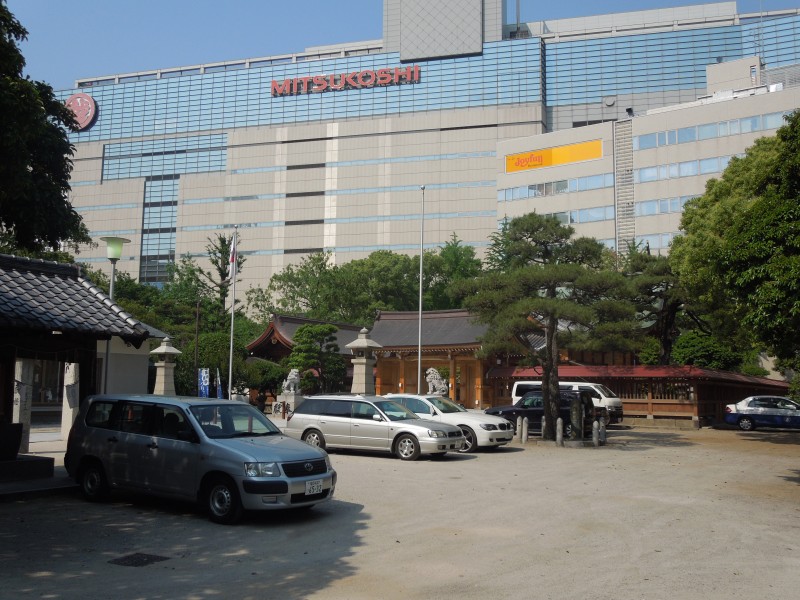Japan’s Shinto Shrines in Crisis Despite Abe Pushing Religion
by Isabel Reynolds
About 41 percent of Japan’s shrines are in danger of disappearing along with the rural communities that support them, estimates Kenji Ishii, a professor of religious studies at Kokugakuin University,one of only two Shinto colleges in Japan.
While the same trend is hitting Buddhist temples in rural areas, shrines are even worse off, according to Hidenori Ukai, a Buddhist priest and author of “Vanishing Temples — the Loss of Regional Areas and Religion.” That’s because temples charge their parishioners for the maintenance of family graves, he said.
“We joke that we take people’s bones hostage,” Ukai said. “Things are hard for temples in areas with shrinking populations, but it’s worse for shrines” which do not conduct burial rites or offer graveyards, he added.

The tiny Koami Shrine in Tokyo. (Photographer: Isabel Reynolds/Bloomberg)
Tadaki Hattori, the 51-year-old chief priest of the tiny, 200 square-meter (240 square yard) Koami Shrine in the busy Nihonbashi area of central Tokyo, said he often tells his fellow priests that making a success of a shrine comes down to sheer effort. He decided to take a shot at full-time priesthood five years ago, after inheriting the 550-year-old shrine from his father.
What was once a lonely spot hemmed in by a parking lot Hattori’s father used to supplement his income, is now bustling with visitors. The run-down buildings have been spruced up with a new bronze roof paid for by donations, and paper lanterns sponsored by businesses hang at the entrance. Far from worrying over a successor, Hattori said all four of his children are interested in qualifying as priests.
Providing a warm welcome and being willing to explain the shrine to visitors or listen to their problems is key to creating good word-of-mouth, Hattori said. An English-language web page has also helped bring in some of the record numbers of foreign tourists in Tokyo.
“If people put in a bit more effort, I think things could improve,” Hattori said. “They give up too easily. They think they can’t make money, but you don’t know until you try. I think this is a trend in Japanese society as a whole — everyone is a bit weedy these days.”

These days a valuable source of income comes from turning shrine grounds into car parks.

Leave a Reply